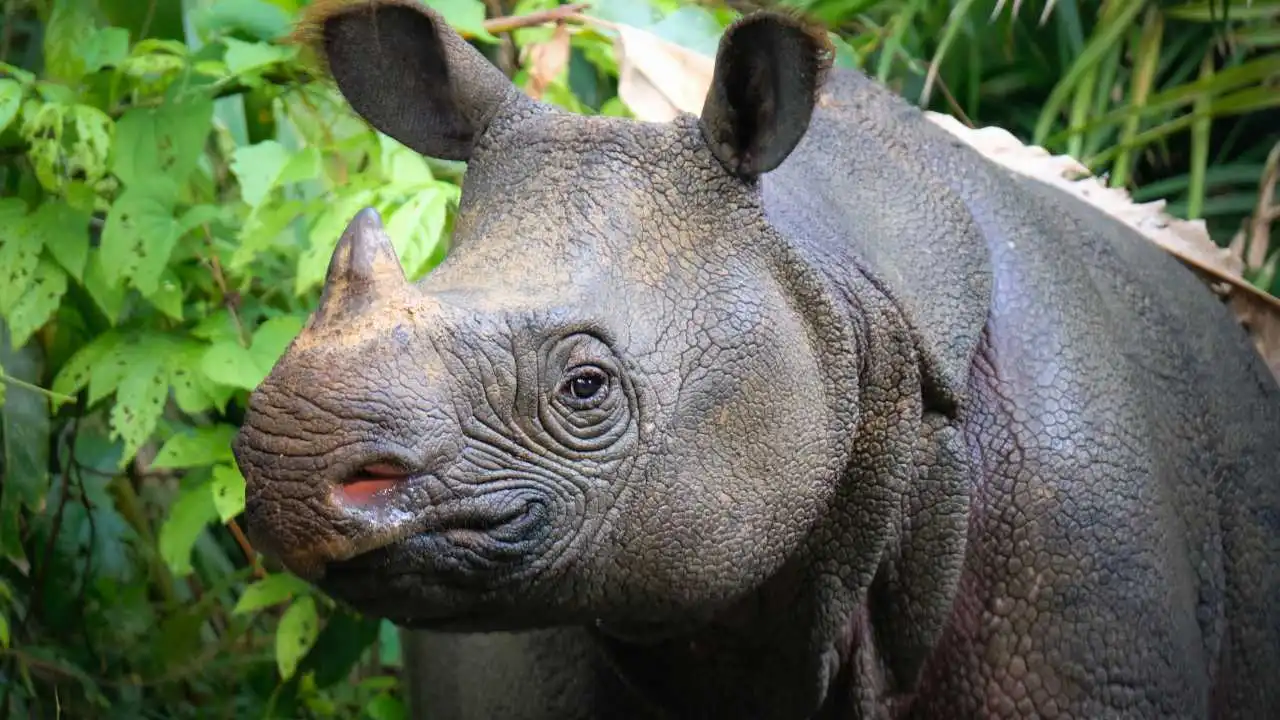Javan Rhinos are one of the rarest species in the world. They are only found in the lowland tropical rainforests and wetlands of the Indonesian island of Java, where they feed off grasses and aquatic plants. Javan Rhinos have a single horn atop their head which can reach up to 20 inches in length which they use for defense against predators as well as foraging activities. As a critically endangered species, conservation efforts are underway worldwide to protect these majestic creatures from extinction.
How many Javan Rhinos are left in the world?

There are around 65-80 Javan Rhinos left in this world. Their population is primarily concentrated in the Ujung Kulon National Park in Indonesia. The threats they confront, like habitat loss, and poaching, put immense pressure on their small population. The exact count of Javan Rhinos is a subject of ongoing monitoring. Protecting these rhinos means safeguarding their habitat from human interference and illegal hunting. Conservation efforts, such as guarding their living space and breeding programs, become vital to prevent their extinction. Javan Rhinos play a crucial role in their ecosystem, and their disappearance could disrupt the balance of nature.
How many Javan Rhinos are left in the wild?
There are estimated to be 65-80 individuals left in the wild. They are primarily located in Ujung Kulon National Park in Java, Indonesia. However, population numbers can change due to various factors such as conservation efforts, natural events, and challenges the species faces.
How many Javan Rhinos are left in captivity?
There are NO Javan Rhinos known to be kept in captivity. Javan rhinos are exceptionally rare, and conservation efforts have primarily focused on preserving their remaining wild population in their natural habitat. Captive breeding programs are challenging due to the specific needs and behaviors of these rhinos.
Did the Javan Rhinos go extinct?
Javan Rhinos have not gone extinct, but they are critically endangered with only a small number remaining in the wild. Conservation efforts are ongoing to protect and preserve This species and prevent their extinction.
How long can Javan Rhinos live?
In captivity, Javan Rhinos have been known to live into their 49s. In the wild, their lifespan is likely somewhat shorter due to various challenges such as predation, habitat conditions, and natural threats. However, the precise data on the lifespan of the Javan Rhino in the wild can be challenging to determine due to the rarity and elusive nature of the species. Conservation efforts primarily focus on protecting and sustaining their population to ensure a healthy and viable future for this critically endangered species.
Why are Javan Rhinos endangered?

Javan Rhinos are endangered mainly because humans are changing their habitats. People are cutting down forests for farming and building, taking away the places where the Rhinos live, and find food. Additionally, poaching is a big problem. Some people kill rhinos for their horns, which are valuable in some cultures. With only a small number of Javan Rhinos left, they face risks like diseases and genetic issues. Natural disasters, like tsunamis and volcanic eruptions, can also harm them. Conservation efforts are essential to protect these rhinos and help them survive.
Why did Javan Rhinos become endangered?
Javan rhinos are endangered because people are changing their homes. The places where they live and find food are getting smaller because of activities like farming and cutting down trees. Some people also hunt them for their valuable horns. With only a few of them left, they face problems like diseases and not having enough different rhinos to have healthy babies. Natural disasters, like big waves and volcanic eruptions, can also hurt them. Conservation efforts, like protecting their homes and stopping hunting, are crucial to help Javan Rhinos survive.
Can Javan Rhinos be saved?

Yes, there is hope to save Javan rhinos. Conservation efforts, like protecting their homes, stopping illegal hunting, and involving local communities, can make a big difference. By working together globally and using strategies to address challenges, we can help these rhinos thrive. Continuous monitoring and support are crucial for their survival, but with dedicated efforts, we can make a positive impact and secure a better future for Javan Rhinos.
Why are Javan Rhinos so important?
Javan rhinos are crucial for biodiversity, shaping their habitats, and maintaining a healthy environment. With cultural significance and potential for tourism, they contribute to local economies. Studying them provides valuable scientific insights. Protecting Javan rhinos preserves genetic diversity, ensuring their adaptability to changing conditions. Conservation efforts for these rhinos are part of a broader initiative to safeguard nature and maintain a balanced diet.
What is the rarest rhino?
The rarest rhino species is generally considered to be the Javan Rhino. These species are critically endangered, with only a small population remaining in the wild. Conservation efforts are in progress to protect and preserve this rare species.
Are Javan Rhinos the rarest rhino?

Yes, the Javan rhino is known to be the rarest rhino species. With a critically endangered status, the Javan rhino has a small and isolated population primarily residing in the Ujung Kulon National Park in Java, Indonesia. The low number of individuals and the specific challenges facing this species contribute to its classification as the rarest among living rhinoceros species.







Leave a Reply